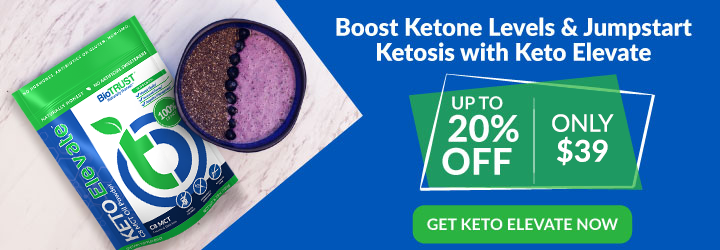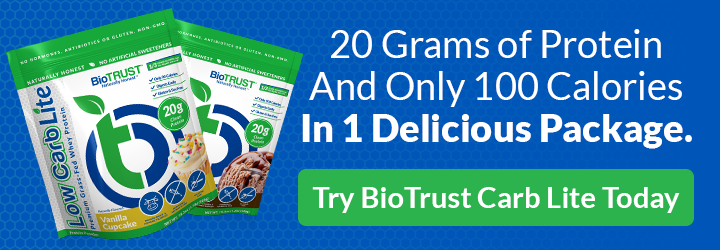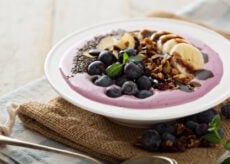Metabolic Age: What Is It + How It Impacts You?

We’ve all heard “age is just a number,” at least when it comes to our chronological age, or the number of birthdays we’ve celebrated. But there’s another age that may be worth paying more attention to: metabolic age. What is metabolic age? Well, it starts with how many calories our bodies burn when we’re at rest (i.e., lying around in bed all day) compared to other folks who have celebrated the same number of birthdays.
While the only real way to change our chronological age is to lie about it, the lifestyle choices we make can change our metabolic age. And the metabolic age has a much bigger impact on our health and longevity.
What is Metabolic Age?
Basal Metabolic Rate
Metabolic age starts with defining the basal metabolic rate or BMR. That is, the number of calories needed to keep your body, including organs and muscles, functioning while at rest. This number is determined by several factors, including weight, height, gender, bone mass, and muscle mass. In short, the higher your metabolic rate, the younger your metabolic age.
In other words, people who have more muscle score better than folks who tend to carry more body fat. Folks with a higher metabolic age also tend to have a higher cardiovascular risk and risk of developing metabolic syndrome. 1, 2 Metabolic syndrome is defined as “a cluster of biochemical and physiological abnormalities associated with the development of cardiovascular disease and type 2 diabetes.” So, metabolic age can provide good insight into a person’s health and fitness status.
LIMITED TIME OFFER: Get Ageless Turmeric, Our Highly-Bioavailable Turmeric & Ginger Supplement, As Low As $14
Unfortunately, you can’t easily determine someone’s metabolic age by just looking at them (or looking in the mirror if you’re assessing yourself) or hopping onto a scale. That’s not enough information to answer “how healthy am I”?
Fortunately, there’s a formula for figuring out your BMR. You can use an online calculator or, better yet, a bioimpedance machine. These machines use an electronic charge to measure water, fat, bones, and muscle and how much each contributes to your total weight. People with more muscle are more metabolically active, so they need more energy (calories) than people who have higher levels of body fat (and less muscle).
If you like math and want to take the time, you can also use the Mifflin St. Jeor equation to determine your BMR. The formula for men is: BMR = 10 x weight in kg + 6.25 x height in cm – 5 x age in years + 5. For women, it’s: BMR = weight in kg + 6.25 x height in cm – 5 x age in years – 161.
A much easier way to figure out your metabolic age is to take this short (less than one-minute) quiz.
You’ll be asked a series of easy to answer (and completely confidential) questions to help you figure out your true metabolic age and how it compares to your chronological age.
Other Factors That Impact Metabolic Age
Beyond weight, body fat, and muscle mass, other factors impact your metabolic age. For example, when we’re younger, especially under 20, BMR is the highest (typically) as our bodies are growing, changing, and developing. Gender, ethnicity, genetics, body shape and frame, and other factors also play a role. Many of these factors make it more difficult to determine calories burned at rest as well as how each body compares to others.
Metabolic age is also related to metabolic health. Metabolic health markers include blood sugar levels, lipid levels (such as triglycerides and cholesterol), blood pressure, and waist circumference. Other factors include thyroid and mitochondrial health, nutrient status, and metabolic flexibility or how easily your body can transition between metabolizing carbohydrates to metabolizing fats.
Because there are so many factors to metabolic age, in general, it’s better to watch your own numbers and how they change as you make lifestyle adjustments rather than just looking at how your metabolic age or BMR compares to other people’s.
RELATED: Collagen Doesn’t Work (Unless…)
How to Positively Change Your Metabolic Age
If you’re currently 58 years old and your metabolic age is 55, you’re on the right track and can just keep keeping on (or keep making minor improvements). However, if you’re 58 and your metabolic age is 62, it’s probably time to make some changes.
Around 70% of your metabolic age (and BMR) is due to genetic factors, height, and weight. That, however, means a whopping 30% of your metabolic age rests in your hands. The lifestyle choices you make today can affect this number, giving you a wonderful opportunity to turn back time, so to speak, if you so choose.
One recent study (from 2021) found that simple changes can slow biological aging, extend health span, and decrease metabolic age. Over the eight-week program, the participants were able to decrease metabolic age by over three years compared to a control group. 3
Some lifestyle adjustments you can make to improve your metabolic age include:
• Being more active: While workouts are important, improving your overall activity levels each day increases how many calories you burn at rest. You can do something big or more structured, such as shooting for 8,000 to 15,000 steps each day. Or you can increase your NEAT (i.e., non-exercise activity thermogenesis) throughout the day by fidgeting, taking the stairs or the long way to the break room, standing as you work, moving more as you do chores, taking exercise breaks throughout the day, doing your own shopping and errands, etc.
• Boost your muscle mass: One of the best ways to improve your metabolic age is to lift weights to gain strength and lean mass. In fact, building strength is one of the most important things you can do to improve longevity.
• HIIT it to help boost metabolism (i.e., increase resting metabolic rate): 4 HIIT stands for high-intensity interval workouts, and it can be included in walking/jogging/running workouts, group workouts, Tabata training, and even weight training workouts. Just remember to limit HIIT to only one to three times per week to avoid burnout and an increased risk of injury.
• Give your body time to recover: Both rest days and quality sleep hygiene are necessary to support a healthy metabolic age. Research has found, for example, that folks who don’t get enough sleep have a harder time burning fat and thus tend to store more fat. Lack of sleep can also negatively shift glucose metabolism and hormones. 5, 6
Shoot for seven to nine hours of sleep per night. Especially for folks who exercise regularly, the body needs sleep to recover. Ensuring you practice healthy sleep hygiene can help you fall asleep faster, stay asleep, and get better, deeper sleep.
• Eat enough calories: Sure, it takes a calorie deficit to lose weight, but if you want to maintain or increase your BMR (you do), then you need to ensure you aren’t cutting calories too much for too long.
To improve your metabolic age, you’re better off cutting calories just slightly (by around 100 calories to 10%) to slowly lose weight, so you don’t put your body into starvation or conservation mode, which slows metabolism and increases hunger. So, for example, if your current calorie intake is 2,800 to maintain your weight, you would decrease it to 2,700 (or increase calorie burning by an extra 100) or 2,520 to support a strong metabolism and still lose body fat over time. 7
• Eat healthy whole foods: Providing your body with vitamins, minerals, antioxidants, amino acids, and other nutrients is vital for overall health, including mitochondrial health. Mitochondrial health, in turn, is important for turning the foods you eat into cellular energy to keep your body functioning. If you aren’t providing the nutrients your body needs, it can result in a sluggish metabolism, decreased mood, low energy levels, etc. Fortunately, many healthy diets fit a variety of lifestyles. Some of those with the most scientific support include the Mediterranean diet, the MIND diet, a high-protein diet, and a low-carb diet. However, you don’t necessarily need to follow any “diet.” As the one thing all of these diets have in common is eating mostly real, whole foods, including plenty of vegetables and fruits, and you can do so without following any specific plan.
• Load your plate with quality protein: Eating enough protein both decreases appetite and supports lean mass. Protein intake is even more important for people who exercise intensely, want to lose fat while building or maintaining muscle, are over 50, or are recovering from an injury. High-protein foods to enjoy include Greek yogurt, salmon, tuna, poultry, grass-fed beef, and legumes like beans, peas, and lentils.
• Manage stress: Stress is a natural and even healthy part of life. However, chronic stress that can lead to burnout can negatively impact the quality of life and metabolism. This is due to the effects of stress hormones, blood sugar levels, and potentially stressful behaviors, such as emotional eating. Exercising regularly, ensuring you get enough sleep, practicing mediation and mindfulness, and getting social support are all healthful ways to help manage stress levels.
• Focus on body composition, rather than weight: Forget about dropping those last 10 pounds (or the first 5), and instead focus on proportions of fat vs. fat-free mass. Body composition provides a more accurate look at what percentage of your body is muscle, water, bone, or fat. Healthy, or at least acceptable, levels of fat for men range from 6% (for athletes) to 24% (for average men), and healthy levels for women range from 14% (for athletes) to 31% (for average women). Your ideal body fat percentage can vary depending on your fitness goals as well as your age, gender, and other factors.
• Stay hydrated: Drinking enough water to stay hydrated and replacing high-calorie beverages (like sodas, energy drinks, and sweetened teas or coffees) with calorie-free water or teas is another vital way to support a healthy metabolism.
Next time you’re celebrating your birthday, consider looking at your metabolic age instead of counting the number of candles. After all, it’s a much better indicator of how young you really are. A healthy metabolic age is, in the end, about balance.
If you haven’t already taken the quiz mentioned above, you can figure out right now where you’re starting. This metabolic age quiz takes less than a minute and is designed with a series of questions to help you figure out your true age.
And if you aren’t completely thrilled with your current metabolic age, you’re now armed with the steps you can start taking to turn back the (metabolic) clock.







